
The Glan Net project carried out by Arthur Odlum, Aimee Goodwin, Yann Blake and Taron Wright aims to target and tackle the major problem of water pollution. Previously the problemstatement that was being addressed was to ”extract litter fromanywater ways in urban areas as litter damages ecosystems”. Following systematic literature review this problem statement hasbecome more precised and narrowed down to the scope of storm pipes. The systematic litera-ture review was carried using the key words ”litter + rivers” and ”litter + ocean” and revealed: first, that the main source of ocean pollution are rivers ; and secondly, that the principal flow oflitter going into rivers comes from storm pipes in urban areas.
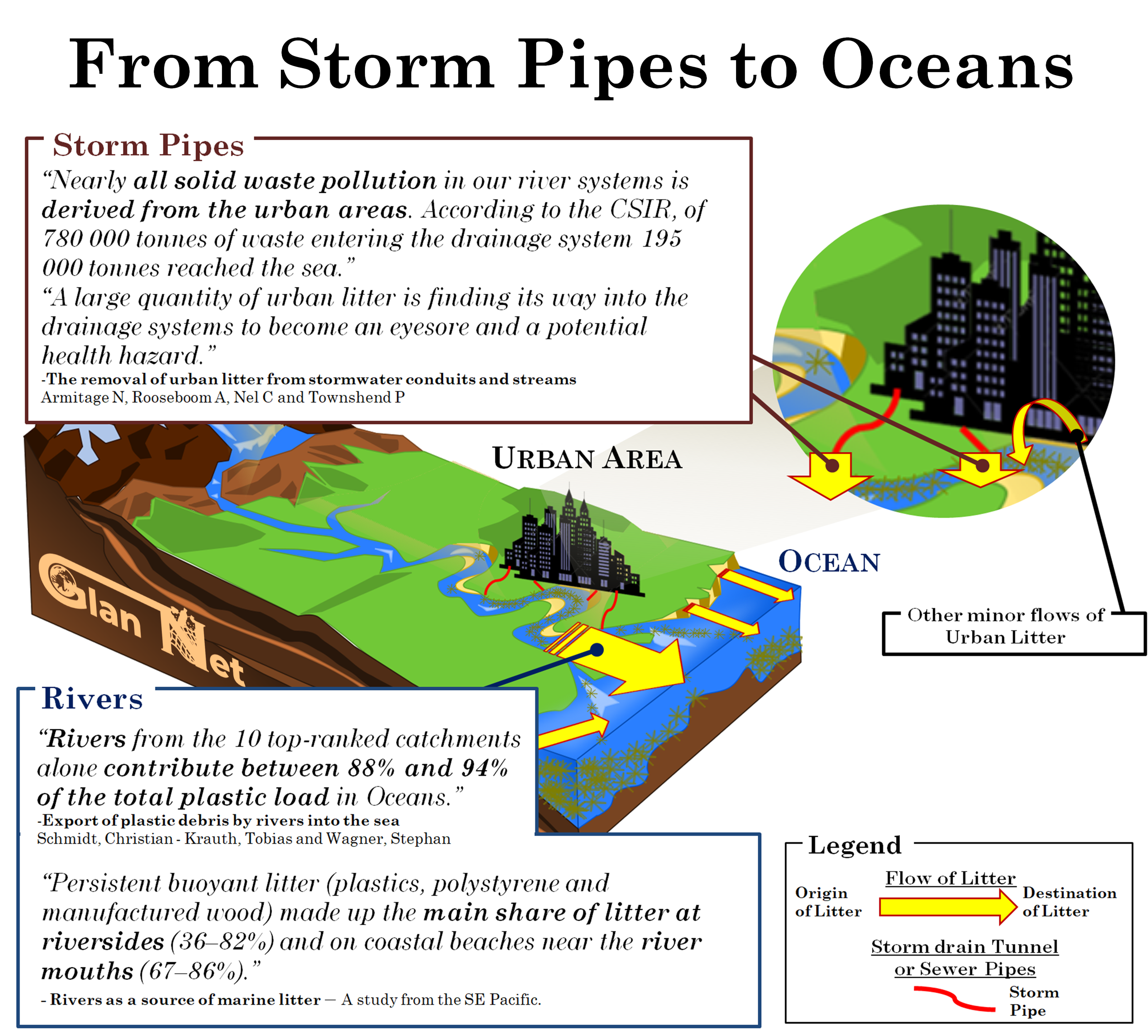
Figure: Diagram describing the pathway of water through waterways and demonstratingthat the major initial source of litter comes from Storm Pipes.
 Several research programs – as shown in Figure 1. where three excerpts from project pub-lications are presented – emphasize on the importance to deal with the flow of urban littercoming out of Storm drain Tunnel or Sewer Pipes from Storm pipes, on a world scale. On Ire-land’s scale, a survey conducted by Irish Business Against Litter (IBAL) shows that only 16% of coastal areas and waterways are clean, with the River Tolka, the River Barrow and CorkHarbour being ’heavily littered’.Once the problem has been clearly identified and attested by several reliable scientificsources, the development of new concepts suitable to solve this new problem statement is be-ing carried out through this present report. Four different concepts that apply to Storm Pipesare developed by each member of the project team with the following structure: a general de-scription, the features of abstraction, functions, requirements, possible solutions and possiblecombinations. The project team all together then evaluate and compare the 4 concepts againsteach other. The detailed concepts are being weighted and scored under a number of differentheadings and from which a final concept is chosen. This concept will then be adapted into aprototype which will allow the main features to be tested and refined or changed if required.
Several research programs – as shown in Figure 1. where three excerpts from project pub-lications are presented – emphasize on the importance to deal with the flow of urban littercoming out of Storm drain Tunnel or Sewer Pipes from Storm pipes, on a world scale. On Ire-land’s scale, a survey conducted by Irish Business Against Litter (IBAL) shows that only 16% of coastal areas and waterways are clean, with the River Tolka, the River Barrow and CorkHarbour being ’heavily littered’.Once the problem has been clearly identified and attested by several reliable scientificsources, the development of new concepts suitable to solve this new problem statement is be-ing carried out through this present report. Four different concepts that apply to Storm Pipesare developed by each member of the project team with the following structure: a general de-scription, the features of abstraction, functions, requirements, possible solutions and possiblecombinations. The project team all together then evaluate and compare the 4 concepts againsteach other. The detailed concepts are being weighted and scored under a number of differentheadings and from which a final concept is chosen. This concept will then be adapted into aprototype which will allow the main features to be tested and refined or changed if required.
Reports & Documents
Upcoming Report on this Survey and extensive Research.
My Concept Design: Rigid Smart Net
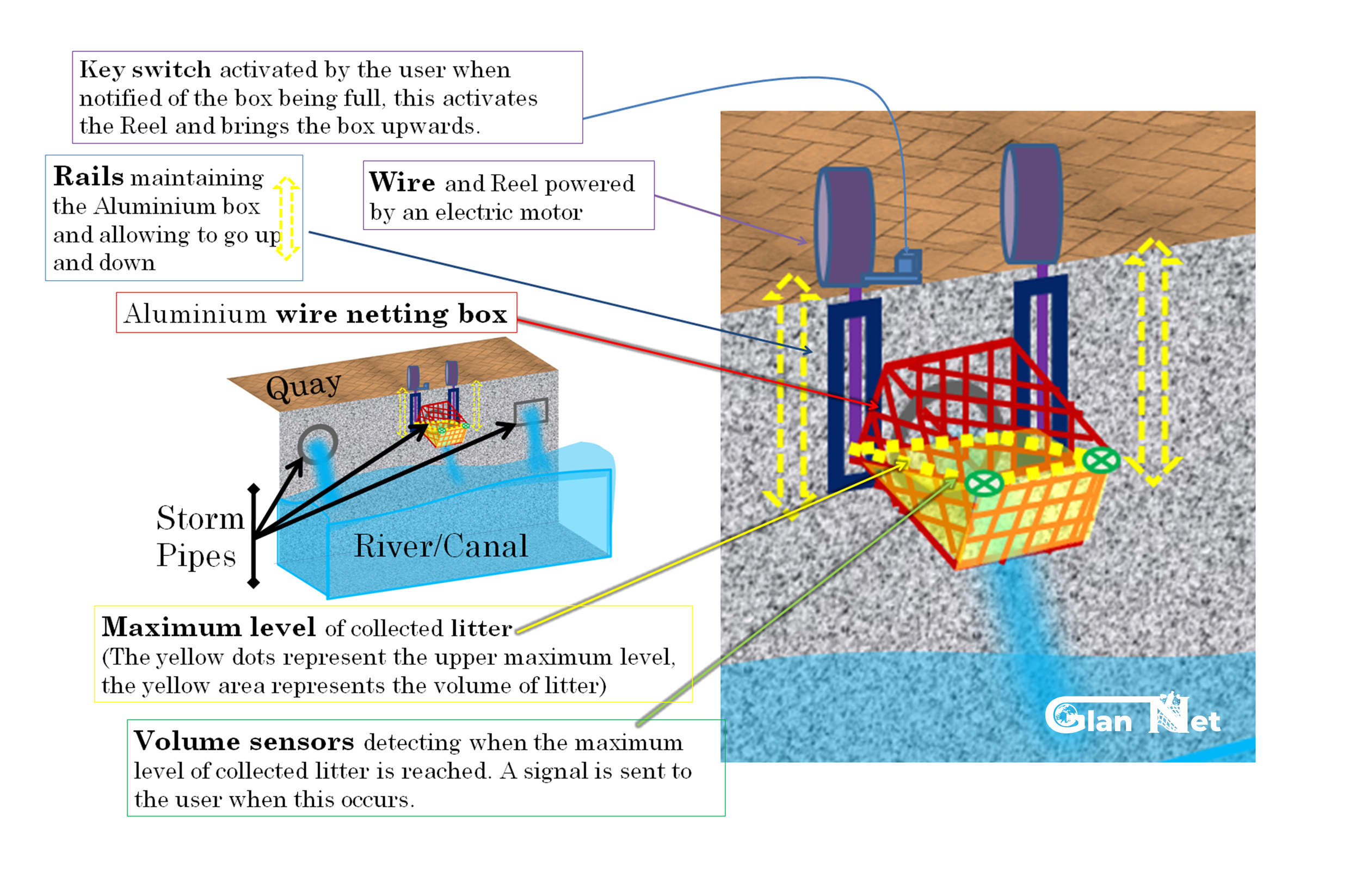
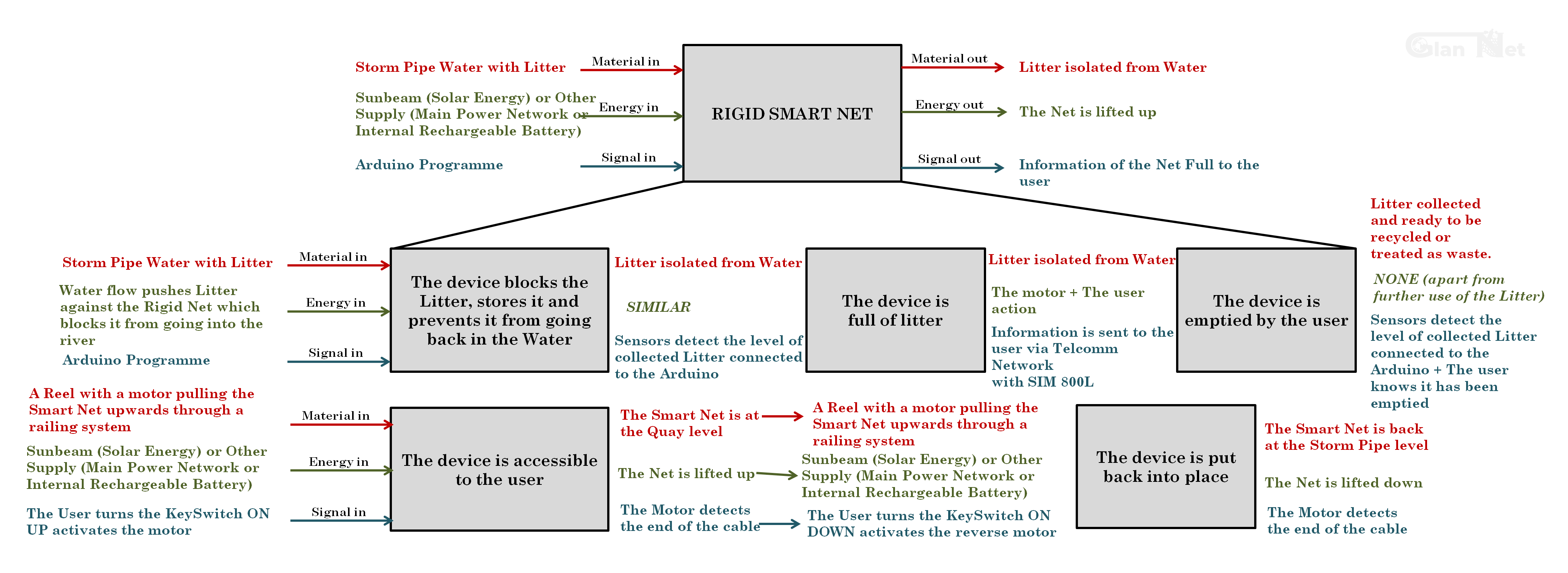
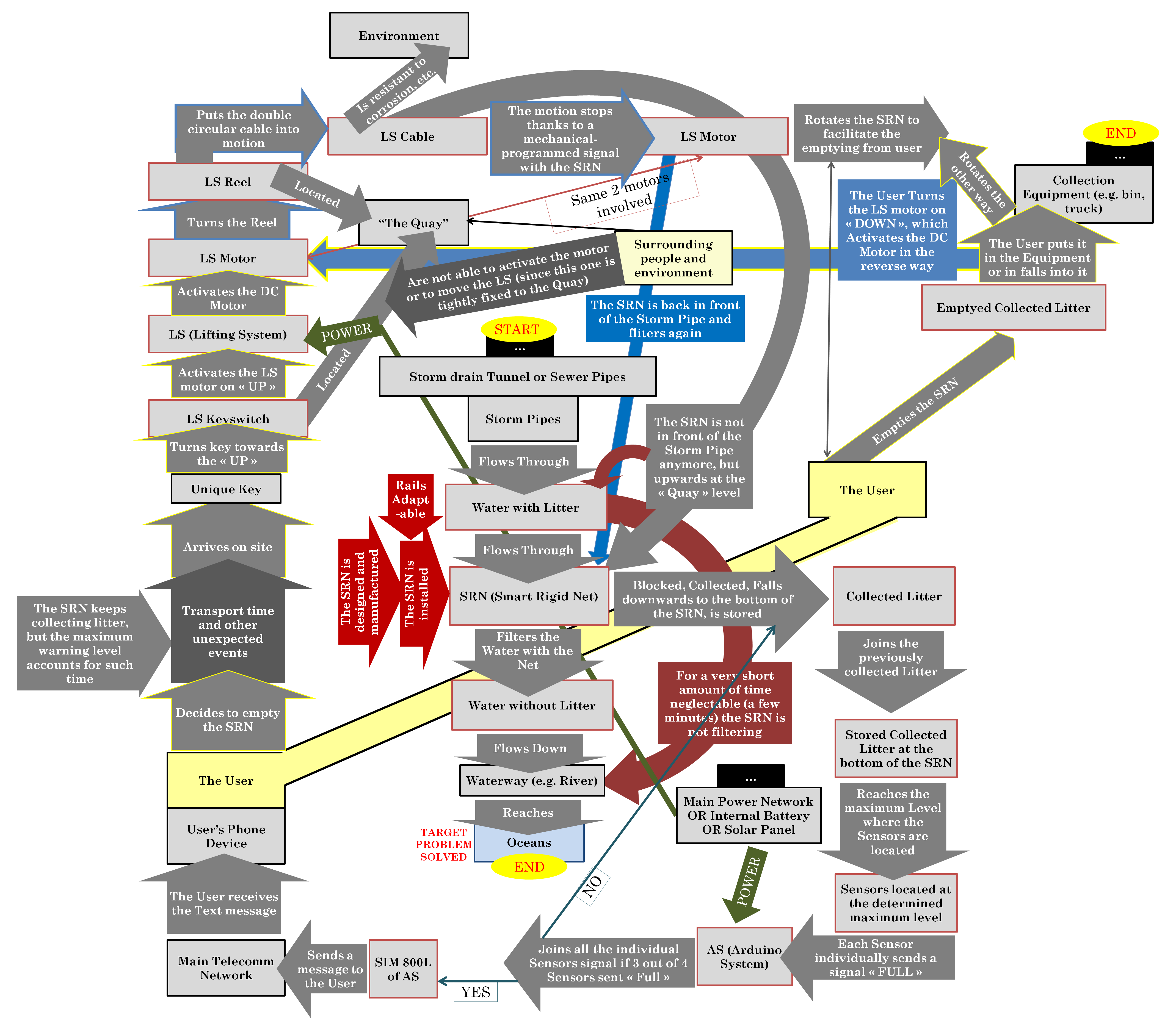
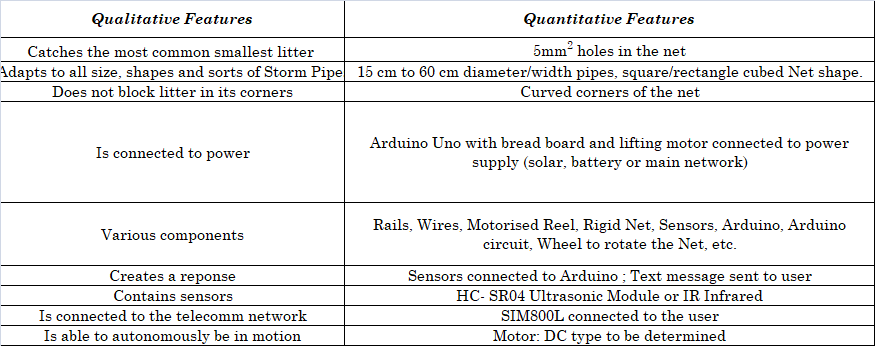
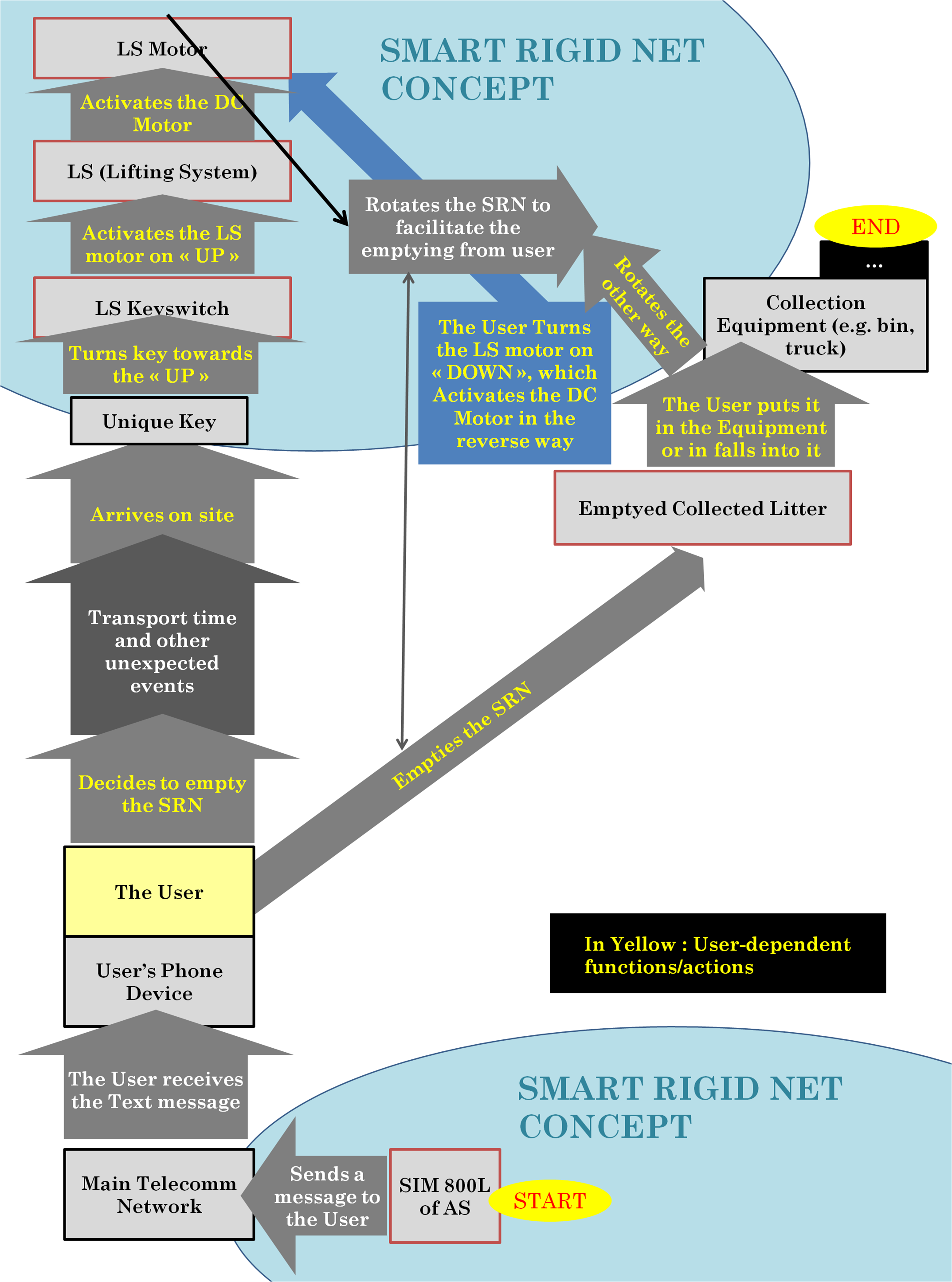
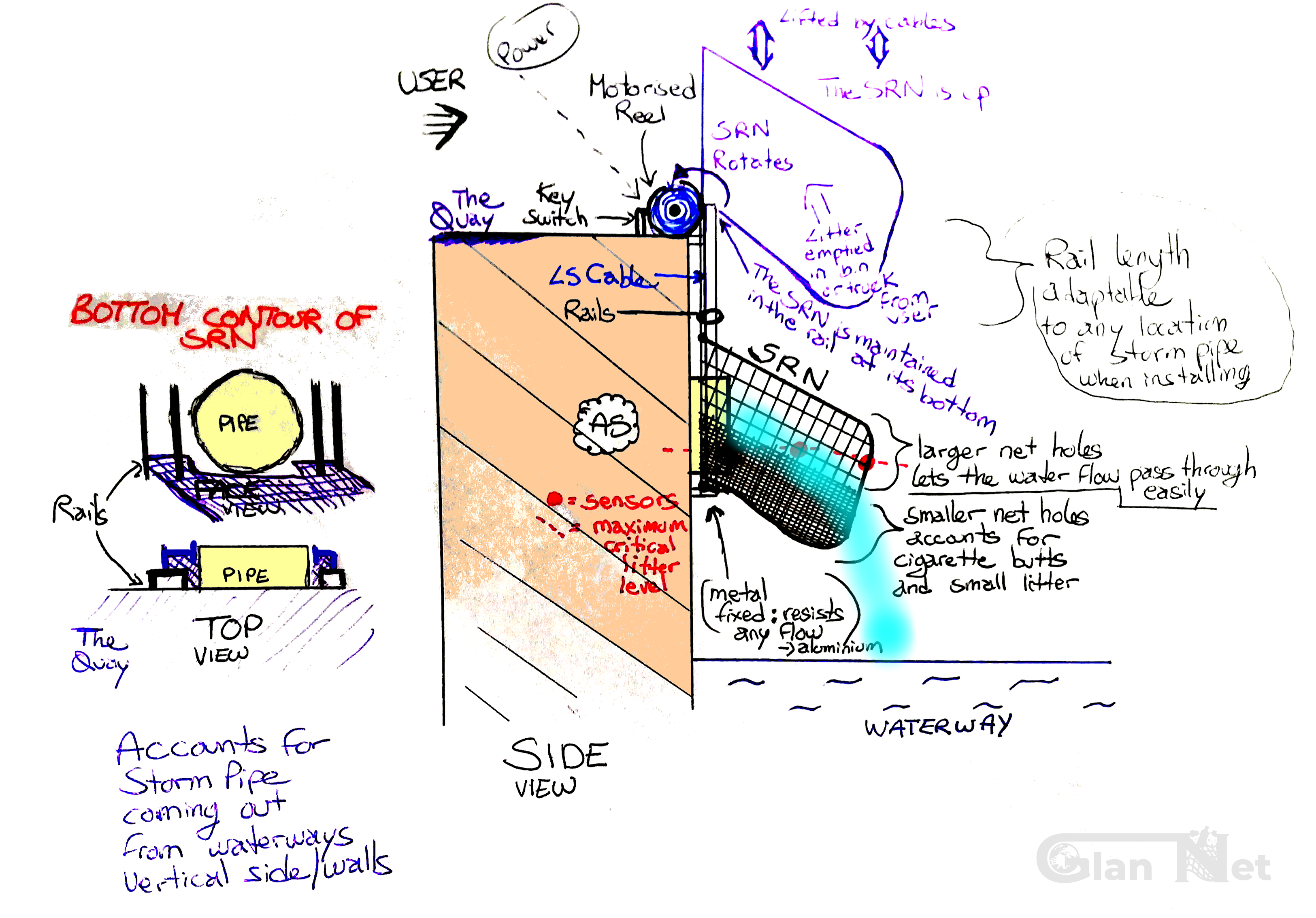
Basic Functions and Features
The concept needs to firstly address the problem of water pollutants with basic abstracted functions that will outline the general idea for the it’s design. These functions are formed by the design specifications that highlight the needs for the design. These functions can be broadly defined as:
1. Collect rubbish from storm drains.
2. Detect when rubbish bin is full.
3. Alert relevant authorities when bin is full.
These functions can be realized in an infinite amount of interpretations but finding the most effective feature is key to creating a good product.
Features:
The features dictate how the functions are implemented into the design. They manifest a physical solution tothe concept ideas. The concept design was an iterative process that included evaluating and eliminating various features that did not properly address the design needs. This process began by taking the function and assigning afeature that would fulfill the requirements.
* Feature 1:The first feature aimed to address the problem of collecting litter from storm drains. The answer to this was to use a net. This formed the basis of our first conceptual design. This first iteration would be a net directly attached to the mouth of a pipe that would collect all passing litter allowing water to pass through. This approach posed many issues, such as majority of the storm drains were a few feet off the floor and the net would need to be propped up to allow the litter to reach the bottom of the net and not cause blockages at the mouth of the pipe. The issue subsequently causes a new problem which is the litter needs to be transported from themouth of the pipe to the net to avoid blockages.
* Feature 2: The next feature that was contemplated was how to detect when the net collecting the litter was full.The initial solution for this was a laser sensor that would detect when the net was full. The issue with this idea was that the sensor would be triggered each time a new piece of litter entered the net. Therefore the best way to correct this was to set the sensor so that if only triggered when the laser was cut for more the 1 minute, indicating the net was full. The Sensors are placed on top of the Net (top face of the box).
* Feature 3: The final feature of the design of the concept is a way of alerting the relevant authorities that the net is full. The simplest way of doing this is to attach a device that will send a signal to the council once the sensor is triggered. This feature has not been reevaluated since it’s implementation has not been properly finalized. Once the pollutants are off loaded onto the net they break a laser sensor that’s positioned at the top of the net.•The sensor breaks continuously as more pollutants fill the net.•The amount of iterations are counted and once the threshold is hit a signal will be sent out to the authorities that the net is near full capacity.•A member of the authorities then collects the full net and replaces it. (Note: user=authorities)
